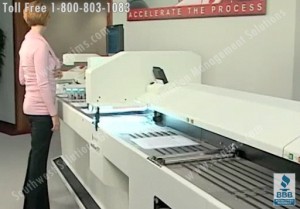Posts Tagged ‘electronic medical records’
Electronic Medical Records (EMR) for Managing Patient Information
 Electronic Medical Records (EMR) for Managing Patient Information
Electronic Medical Records (EMR) for Managing Patient Information
Healthcare providers face many challenges including, protecting patient records, quickly retrieving information, and reducing administrative overhead. Also, the law requires physicians to maintain complete and accurate medical records for each of their patients, and a failure to maintain a record for each patient constitutes professional misconduct.
Investing in an electronic medical records (EMR) system is an excellent way to ensure your healthcare facility will be able to provide efficient, coordinated, cost effective, safe and high-quality patient care.
Benefits of Managing Patient Information with Electronic Medical Records
Electronic Medical Records allow doctors easy access to complete and up to date patient medical records. The EMR provides important information about medications the patients are taking, immunizations, and allergies, which a patient might not remember when they are filling out forms. Also, personnel can quickly update the records with any address changes or insurance changes.
Electronic Medical Records save money. First, they save on the cost of paper and file folders. Second, an EMR system saves space because you no longer have to find areas to store and organize so many paper records. Finally, EMRs save on labor costs because employees can just type a few identifying keystrokes to retrieve a patient’s record instead of sorting through hundreds of file folders to retrieve and re-file a patient charts.
Ready to Convert to an Electronic Medical Records System?
 Whether your business is a hospital, clinic or small private practice Southwest Solutions Group Information Management professionals can help you convert to an Electronic Medical Record System. We offer secure EMR-Compatible HIPAA compliant medical records and patient chart scanning services that are cost effective without sacrificing quality, service, or the privacy of your patients. If you want more information about EMR and our state of the art scanning services, call us at 1-800-803-1083 or send us an email.
Whether your business is a hospital, clinic or small private practice Southwest Solutions Group Information Management professionals can help you convert to an Electronic Medical Record System. We offer secure EMR-Compatible HIPAA compliant medical records and patient chart scanning services that are cost effective without sacrificing quality, service, or the privacy of your patients. If you want more information about EMR and our state of the art scanning services, call us at 1-800-803-1083 or send us an email.
10 Steps to Converting Electronic Medical Records (EMR)
Why Electronic Medical Records (EMR)?
 Healthcare providers all across the U.S. are migrating their medical charts to Electronic Medical Records (EMR) to increase record accuracy, decrease waste, eliminate costly storage space, and improve patient care. Hospitals are also seeking to take advantage of government incentives under the American Recovery and Reinvestment Act (ARRA). Right now, everyone is focusing on the “carrot” of payments they can receive by implementing EMR. But the “stick” comes out in 2015, when hospitals that don’t meet federal guidelines for paperless records may be penalized with reduced Medicare reimbursements.
Healthcare providers all across the U.S. are migrating their medical charts to Electronic Medical Records (EMR) to increase record accuracy, decrease waste, eliminate costly storage space, and improve patient care. Hospitals are also seeking to take advantage of government incentives under the American Recovery and Reinvestment Act (ARRA). Right now, everyone is focusing on the “carrot” of payments they can receive by implementing EMR. But the “stick” comes out in 2015, when hospitals that don’t meet federal guidelines for paperless records may be penalized with reduced Medicare reimbursements.
What’s Holding Healthcare Organizations Back from Using EMR?
 The new government rules to EMR are confusing and picking the right document imaging software system is challenging. Plus, there is significant expense and disruption involved when you make such a big change in how medical records are handled. It’s just not feasible to expect hospitals to do this on their own without expert guidance from information management professionals. Software vendors are happy to sell you imaging hardware and advise you on how to install image software on your computer network; but that doesn’t help with the real-life obstacles you will face in converting your medical file charts to electronic images that can be located when you need them.
The new government rules to EMR are confusing and picking the right document imaging software system is challenging. Plus, there is significant expense and disruption involved when you make such a big change in how medical records are handled. It’s just not feasible to expect hospitals to do this on their own without expert guidance from information management professionals. Software vendors are happy to sell you imaging hardware and advise you on how to install image software on your computer network; but that doesn’t help with the real-life obstacles you will face in converting your medical file charts to electronic images that can be located when you need them.
 Getting Help Converting Electronic Medical Records
Getting Help Converting Electronic Medical Records
Converting medical records to a document imaging system takes the help of a qualified information management specialist who has experience in the EMR imaging process and government requirements. A qualified information management specialist will help you understand the process and avoid common mistakes that can set your organization back. For example, EMR compatible medical records scanning involves more than simply scanning records and uploading a pdf of a patient’s chart into a database. If you don’t have federally approved quality controls in place, you may end up with a bunch of electronic records that are not considered true originals. That’s an excuse Medicare can use to deny payment. Below is an overview of ten steps to converting your medical documents to Electronic Medical Records.
10 Steps to Converting Your Paper Medical Records to EMR
1. Survey – Review your current filing system to discover the best documents to image 2. Plan – Develop a master plan to map and document every step of the conversion process including establishing your document indexing requirements 3. Pack & Manifest – Box and label medical charts/records to be imaged so they can be tracked throughout the conversion process 4. Secure Transportation – Ship record boxes with documents to be scanned and imaged via a bonded courier directly to a secure image conversion facility 5. Validate Receipt – Have the image conversion facility provide receipt of shipment and confirmation documentation of all documents are present 6. Prep & Scanning – The image conversion contractor should prep documents, removing staples and repairing any damaged records before scanning documents with a high quality production scanners to ensure a high quality, clear and complete scan of each file 7. Indexing – Document The image conversion contractor should index documents according to your specifications established in Step Two 8. Quality Control – Request a sampling of imaged documents to ensure scanning and indexing accuracy of each record 9. Output – Upload the scanned records into your EMR software system or supply on CD/DVD if requested 10. Store or Shred – Provide storage, shredding, or secure shipping instructions for paper records



